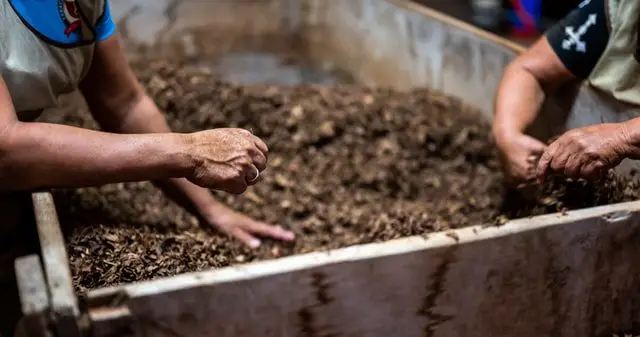People spread compost on their lawns in different ways using different equipment and garden tools. For many, spreading with a compost spreader may be ideal, for others, hand spreading and raking would be a much better idea. But there’s always a never-ending debate on gardening forums about the simple and effective ways.
In this article, we seek to highlight some of the best ways people have been spreading compost on their lawns. So, let’s begin.
Contents
What’s the best way to spread compost on the lawn?
Honestly, there’s no best way recommended because what works for Mr. A in state A may not work for Mr. B. However, we’ll outline some of the beautiful ways below.
1. Use A Compost Spreader
The first thing we’d recommend that you do is to use a compost spreader to spread the compost on your lawn. Compost spreaders are specifically designed to spread the compost. They do the job better than when you use other spreaders like the broadcast spreader, which isn’t explicitly designed to spread compost.
For compost spreaders, we recommend the Landzie Lawn & Garden Spreaders. It’s large enough to cover up to 24-inches of ground with compost at a go, and it’s relatively easy to use while being lightweight. You can opt for the 42-inch design if you have a more extensive lawn and want to get done with applying the compost as quickly as possible.
Take note of the type of compost you can apply with the spreader you choose.
2. Spread Compost With A Rake or Shovel
Other great tools you can use to spread compost on your lawn are the rake and shovel. Consider getting rakes with spaced tines so you can spread more compost over an area as quickly as possible. The rakes should be lightweight to ensure your arms don’t get tired quickly. The same applies to shovels. They’ll come in handy for first pushing the compost from the compost pile or bin to where you want it before you spread it on the lawn. If you have a garden wheelbarrow, it’ll come in handy here too.
3. Using an old sack.
This is an overlooked idea you should explore. What does a torn sack mean? If you have used sacks of salt, rice, etc., in your house and you’re about to throw it away, you can cut some decent-sized holes beneath the sack and add compost into the sack. Only take as much as you can carry since compost can be heavy (depending on the type). While you walk on your lawn, gently shake the sack so that the compost can drop from the holes you’ve cut underneath. Step on it if necessary, but be sure not to kill your grass while you’re doing so. This is also a great way to add soil to the lawn. If you’re going to add soil to the lawn using this method, we recommend cutting the holes horizontally on the sack.
4. Use a Trowel & Wheelbarrow
This is another quick way to get compost on the lawn; however, it’s time-consuming. Fill a wheelbarrow with the desired amount of compost (a little at a time is ideal) and move it on the lawn. Divide your lawn into imaginary parts and spread the compost with a hand trowel on one part before moving to another. As we mentioned earlier, it may be a cumbersome process, but it works. Don’t do it if you have a large lawn.
I’ve heard a ton of people ask, Can you put compost in a spreader?
Yes, you can put compost in a spreader. But as we mentioned earlier, you should use a compost spreader or a peat moss spreader for spreading the compost. If you use a broadcast spreader, you’ll be wasting your time, as the designs of the broadcast spreaders are more suited for smaller granules. That’s why it’s easy to apply fertilizer with them.
- How to Get Potatoes to Sprout Eyes: Detailed Growing Guide with 3 Options - July 31, 2023
- Weight of a Medium Potato: Revealed in Detailed Guide - July 29, 2023
- Maris Piper Potatoes: 9 Substitutes You Should Know About - July 27, 2023
Hello! I’m Jessica Zander, a garden coach and consultant based in the Boston area (zone 6b), offering virtual consultations across the country and Canada.
I’ve been passionate about gardening since the early 1990s, and in 2022, I launched You Can Do It Gardening to empower individuals to feel more confident in their gardening endeavors.
Following a 30-year career in nonprofit finance and operations, I transitioned out of that field in mid-June of 2023 due to the growing demand for coaching services. Interestingly, my years of presenting financial statements to boards and finance committees proved to be valuable experience for teaching people about gardening! I enjoy sharing skills, providing guidance and suggestions, and collaborating efficiently with clients to make significant improvements to their outdoor spaces, both small and large. I also regularly teach at the Arlington Continuing Education and Cambridge Adult Education.
My approach is direct and practical, akin to Mary Poppins, but tailored to your garden. Clients find satisfaction in saving money and taking pride in their own gardening achievements.


Add comment